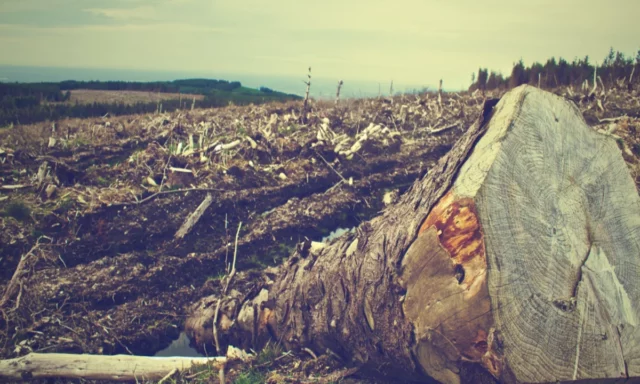Countries are failing to meet international targets to curb global forest loss and degradation by 2030, a study says. These are the first data on progress made since last year, when world leaders set such targets at the 26th UN Conference of the Parties on Climate Change (COP26), held in Glasgow. Conserving forests, which can store carbon and sometimes cool the local climate, is a crucial component of the strategy against global warming.
The study, titled Evaluation of the declaration on forests, shows that global deforestation decreased by 6.3 percent in 2021 compared to the average value of 2018-20. However, this “modest” improvement falls short of the 10 percent needed to curb deforestation by 2030, according to Erin Matson, a consultant with advisory firm Climate Focus and a co-author of the assessment, published Oct. 24th.
“It is a good start, but we are behind schedule,” Matson warned at a press conference, although he qualified that data from a single year had been analyzed. In the coming years we will have a clearer idea of the deforestation trend, he added.
The assessment, carried out by various civil society organizations and research groups (including the World Resources Institute, an environmental think tank), has come just ahead of the 2022 climate summit (COP27), which is celebrating these days in Egypt. Scientists agree that deforestation must stop to limit global warming to 1.5-2 degrees Celsius above pre-industrial temperatures. A greater increase would cause profound alterations in the Earth’s climate.
Tropical forests are the key
Two of the deforestation indicators used in the report were analysis of tree canopy changes from satellite data and the Forest Landscape Integrity Index, which measures the ecological health of forests. The slow progress can mostly be attributed to a few tropical countries with high deforestation. Among them is Brazil, the world leader in tree loss, which in 2021 registered an increase of 3 percent compared to the reference years. Two other countries that deforest the most, Bolivia and the Democratic Republic of the Congo, also had increases of 6 and 3 percent, respectively.
The loss of tropical forests is especially worrying because more and more studies show that, in addition to sequestering carbon, they can cool nearby areas by creating clouds, moistening the air and releasing certain molecules. Conserving these forests makes a huge contribution to global cooling that current policies ignore, as a report published at the same time as the assessment explains.
Tropical Asian countries are the only ones on track to end deforestation by 2030, according to the assessment. This region slowed the loss of primary moist forests by 20 percent from the 2018-20 average, largely thanks to big changes in Indonesia (one of the world leaders in deforestation), where primary forest loss fell 25 percent in 2021, compared to the previous year. “The progress we are seeing is due to exceptional results in some countries,” Matson observed.
Efforts by the Indonesian government and companies to repair environmental damage from palm oil production were key to the improvement, according to the assessment. For example, since 2020, more than 80 percent of the refineries of this oil have committed to not cut down or deteriorate more forests. In 2018, in addition, the Indonesian government paralyzed the creation of new palm plantations. Even so, this suspension ended last year, which casts doubt on the continuity of these advances.

Economic obstacles
Global demand for products like meat, fossil fuels and timber are causing much of today’s forest loss, as industry clears trees to create new pastures and extract resources. Matson commented that progress is slowed down because many governments have not introduced reforms, such as establishing protected areas or tax incentives, that motivate the sector to take care of the forests. “Tougher measures must be imposed,” he criticized.
In particular, nations are lagging behind in fiscal support for forest protection and restoration. Based on previous assessments, the current estimate is that conservation efforts require between €45 billion and €460 billion per year to meet the 2030 target. Current investment is, on average, less than 1 percent of what is needed.
Matson added that governments need to be more transparent about funding, setting milestones and reporting progress to the public. Michael Wolosin, climate solutions adviser at the environmental NGO Conservation International, would like donor countries to reaffirm their financial commitment to forests at COP27 this year.
Not reinforcing inequalities
However, Constance McDermott, an environmental researcher at Oxford University, warns against focusing too much on “estimates of changes in forest area and money invested.” Social equity for indigenous peoples and local communities should be on the table, but it is something that is hardly talked about, he denounces. We must support the responsible forest management efforts of these communities, reinforcing their land rights and addressing the problems they identify in relation to land use, adds McDermott. Otherwise, he concludes, “global efforts to curb deforestation are more than likely to reinforce inequalities at the local, national and global levels.”

